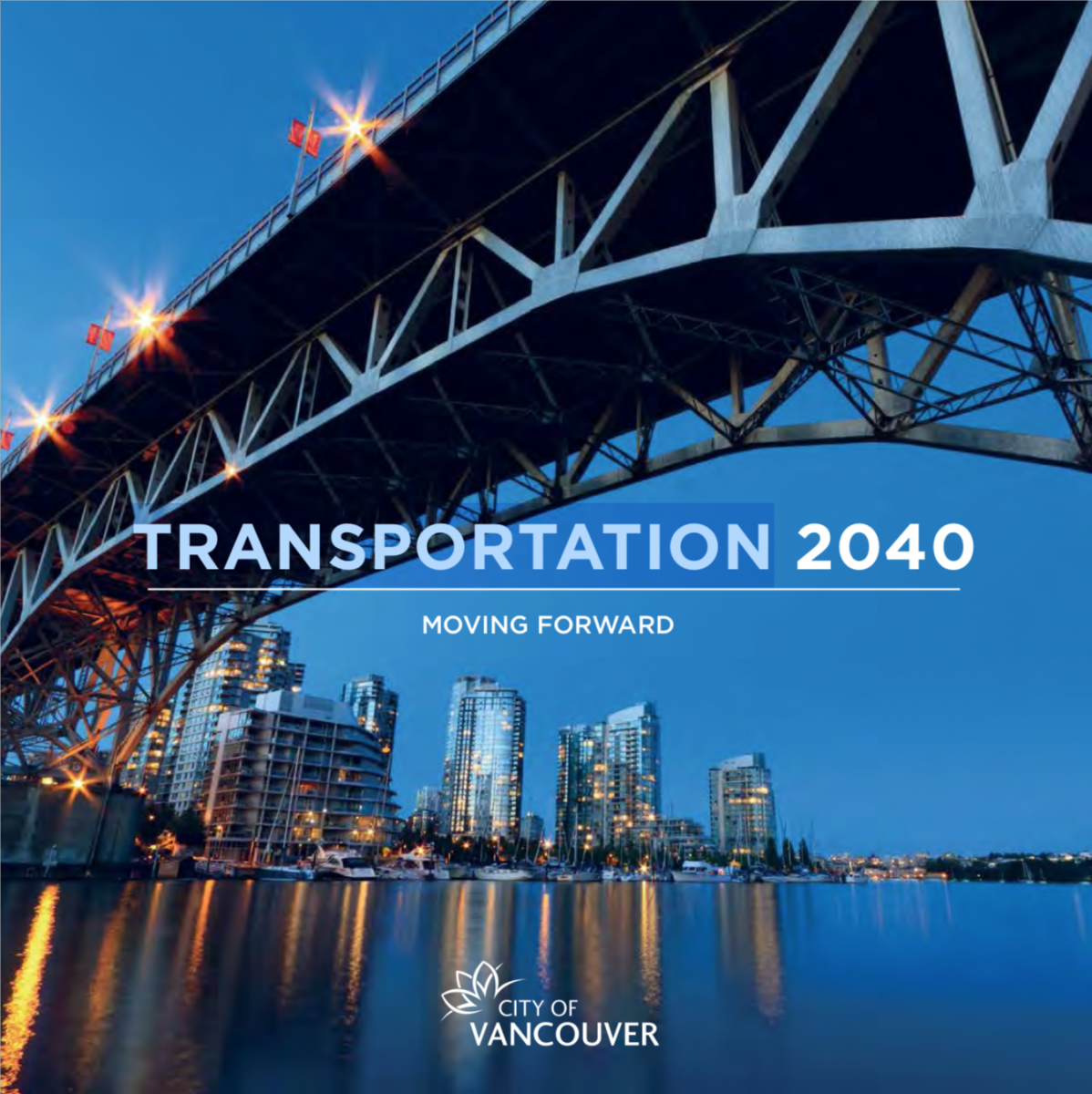
City of Vancouver, Internal Stakeholder Advisory Group (City departments and organizations, BC Ministry of Transportation, Metro Vancouver, Vancouver School Board and more), External Stakeholder Advisory Group (Access Transit, Bike-share BC, Pedestrian Advocacy Network, University of British Columbia, and more), and an international peer review panel
New funding sources are needed to maintain the existing level of transit service, and to meet future goals. The plan proposes funding through: increased fuel taxes; a regional carbon tax; vehicle registration fees; and regional road pricing. These strategies would encourage sustainable modes of travel.
Vancouver’s Transportation 2040 Plan
Sustainable, healthy, affordable and accessible transportation by 2040
“By 2040, we envision a city with a smart and efficient transportation system that supports a thriving economy while increasing affordability; healthy citizens who are mobile in a safe, accessible, and vibrant city; and an enhanced natural environment that ensures a healthy future for people and the plane.” (2040 Plan, pg. 2).
Addressing challenges with specific targets
This plan was developed through research on best practices, local expertise and public input. The purpose of the plan was to address challenges facing Vancouver including a high demand for transit, aging populations, rising fuel prices, climate change, sedentary lifestyles, and limited road space.
In order to address these challenges, this plan lays out a strategy to meet three main targets:
- Mode share: By 2040, at least two-thirds of all trips will be made by walking, bicycling, and transit.
- Distance driven: By 2020, average distance driven per resident is to be decreased by 20% from 2007 levels.
- Zero traffic fatalities: Emphasis is the safety of vulnerable road users
Clear implementation strategy and coordination with partners as the key to success
To ensure that the City of Vancouver meets the targets of this plan, a clear implementation strategy was created that includes objectives for a pedestrian network, public spaces, a cycling network, multi-modal integration, local transit, supportive public realm, promotion of walking and education on safety.
The plan was approved by Vancouver City Council in 2012, and since approval, progress has been made. In 2015, the City approved plans to allow roller blade, skateboard and scooter users to utilize bike facilities. In 2016, the City of Vancouver launched the first public bike share program in partnership with Vancouver Bike Share: Mobi by Shaw Go. In its first year, the program gained over 6,400 members and in 2018 the program expanded its service area to six more neighbourhoods. In 2017, a Congestion Management Strategy was adopted in order to monitor congestion and address areas of concern. In addition, work to provide better active transportation routes in Vancouver is currently underway and being completed. The Arbutus Greenway will be an accessible space for walking, cycling and rolling, and the Burrard Bridge was updated in 2017 to enable pedestrian use.
The City of Vancouver has been working with partners on transportation issues through the development of a variety of plans. Many organizations, such as TransLink and the provincial government, have set their own transportation targets and developed strategies to address them. TransLink sets regional priorities for transportation and the City of Vancouver sets priorities for land use planning. This plan acknowledges that coordination is important, and the City is working to ensure consistency with the Translink regional transportation strategy.
Together is better - we love it, Vancouver!

